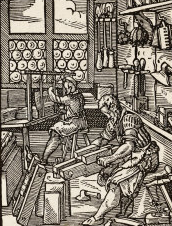The Spectral and the Comic Animal in Contemporary British Theatre
Abstract
In 2016, two plays with relatively similar settings premiered at the Royal Court, Caryl Churchill’s Escaped Alone in January and Stef Smith’s Human Animals in May. Churchill’s play explores the heterotopic nature of theatre as it juxtaposes a hyper-naturalistic setting of an English garden in which four women in their seventies exchange pleasantry and a surrealist, minimalist setting for the apocalyptic scenarios narrated by one of the characters. Human Animals is no less experimental when it comes to scenographic technique, as the stage design cleverly evokes an illusion of a hamster cage. Nevertheless, what brings these two plays even closer together is their representation of animals, not as helpless, subservient creatures, but as the source of fear and dread for human beings. Sally’s cat phobia in Escaped Alone as well as Londoners’ irrational reaction to the city’s animal infestation in Human Animals assign to animals – from domestic ones such as cats, to non-domestic ones such as foxes, mice, and pigeons – a central status that is capable of influencing man’s thoughts and behaviour. This article will analyse the two mentioned plays with the goal of elucidating the manner in which contemporary British theatre has resorted to animals, both metaphorically (animals as undesirable groups of people) and literally (animals as parts of nature), to address more effectively the ethical and environmental concerns of the time. The reversal of power relation between animals and human beings is certainly meant for comic effect, yet, in the end, the comic animal that emerges is none other than man himself, in the sense that he can easily surrender his rationality and his ethical ground to fear and anxiety. It is true that there is no animal character in Escaped Alone and Human Animals, nor is there extensive visual presentation of animals on stage. Nevertheless, their spectral quality paradoxically empowers animals, which consequently pushes forward a paradigm shift in the anthropocentric approach of animal representation on stage.
Published
Issue
Section
License
- Work submitted for publication must be original, previously unpublished, and not under consideration for publication elsewhere. If previously published figures, tables, or parts of text are to be included, the copyright-holder's permission must have been obtained prior to submission.
- Authors of accepted manuscripts will assign to L'Atelier the right to electronically distribute their article, or publish it in any form (Internet, CD ROM, printed copy) but authors will retain copyright and, after the article has appeared in L'Atelier, authors may republish their text (in print and/or electronic form) as long as they clearly acknowledge L'Atelier as the original publisher.


